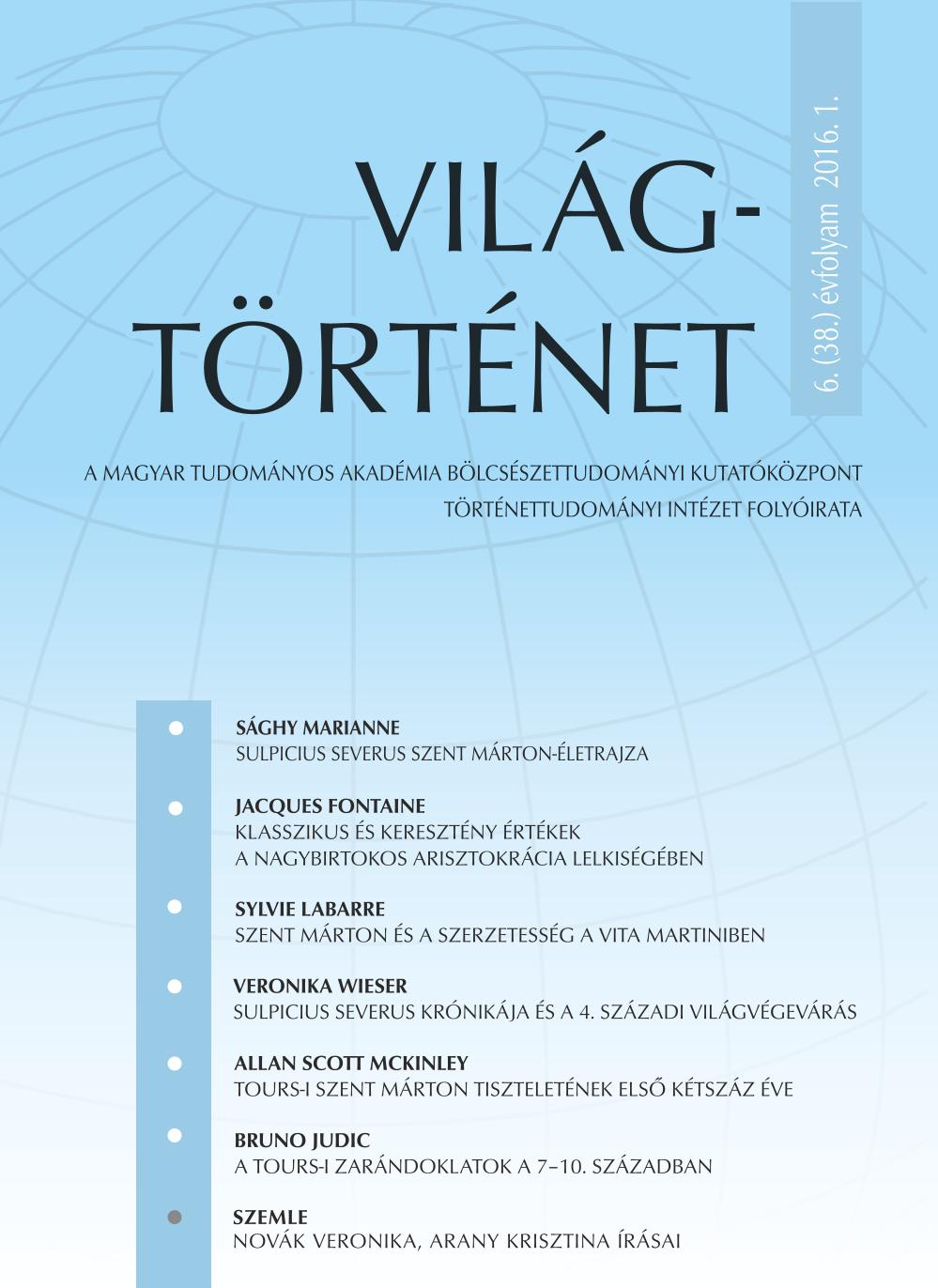Szent Márton és a szerzetesség a Vita Martini prózai és verses változataiban
Saint Martin and Monasticism in the Prosaic and Lyric Versions of the Life of Saint Martin
Author(s): Sylvie LabarreSubject(s): Christian Theology and Religion, Cultural history, Ancient World, History of Religion
Published by: Magyar Tudományos Akadémia Bölcsészettudományi Kutatóközpont Történettudományi Intézet
Summary/Abstract: Sulpicius Severus’ Life of Saint Martin and his Dialogues present the main themes of monastic life: separation from the world, communal life, asceticism, clothing, prayer, separation of the sexes and exaltation of virginity. These prose works shape the portrait of an action-oriented monk-bishop, who realizes the ideal of the “mixed life” that combines action with contemplation, and solitude with presence in the world. In the fifth century, Paulinus of Périgueux, in his hexametric Life of Saint Martin, describes precisely the site of Marmoutier, and expands the description by imitating Vergil: for instance the locus horridus is made a place of learning for the saint in prayer. Paulinus emphasises the copyists’ work, integrating the human body through spirituality. In contrast to Sulpicius, Paulinus no longer compares Martin to the desert fathers. A century later, the poet Venantius Fortunatus reduces the foundation of Marmoutier to an epic stereotype and an antithesis between the monk and the bishop. The bishop clearly triumphed over the monk and Martin is seen more like a bishop and an intercessor.
Journal: Világtörténet
- Issue Year: 2016
- Issue No: 1
- Page Range: 69-85
- Page Count: 17
- Language: Hungarian

